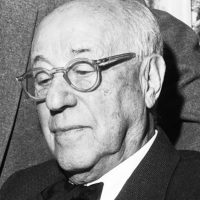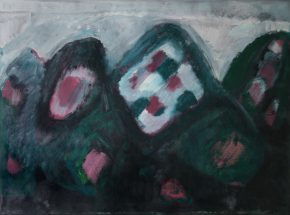

James Naumburg Rosenberg’s (1874-1970) oil and pastel artworks prove his capability of passionate brushstrokes, vibrant lighting effects, and a full color palette that present skill and flexibility. In addition to making art, he was an accomplished lawyer, humanitarian, and author. After attending Columbia College, he graduated from Columbia Law School, New York, in 1898 and worked at a law firm under Judge Samuel I. Rosenman, who later coined the term “New Deal.” During his law career in the 1920s, Rosenberg collaborated with President Herbert Hoover on Russian famine relief in the Soviet Union, served as chairman of the American Jewish Joint Distribution Committee, and founded an organization that aided 80,000 non-Jewish peasants and saved approximately 300,000 Soviet Jews from the Crimea ghettoes. He retired from law in 1947 in order to devote himself to art. Throughout his life, Rosenberg spearheaded efforts to promote the arts. In 1922, Rosenberg founded the New Gallery in New York dedicated to the exhibition and sale of works by lesser-known artists. He created his famous lithograph Dies Irae on October 29, 1929, the same date as the Wall Street stock market crash; the artwork was reproduced on the front page of The New York Times in 1930. He also wrote Nine Open Letters to the Metropolitan Museum of Art, encouraging the New York institution to accept artworks made by living, contemporary American artists. Additionally, he purchased Art Digest and renamed it Arts Magazine, a monthly subscription that provided coverage of American art exhibitions. Rosenberg’s paintings were showcased in the Museum of Fine Arts, Boston, Massachusetts, and the Fogg Museum in Harvard University, Cambridge, Massachusetts, among others. His work is housed in public collections such as the Cleveland Museum of Art, Ohio; Telfair Museum, Savannah, Georgia; the Phillips Collection, Washington, D.C.; and in the United States Embassy in Rio de Janeiro, Brazil.







